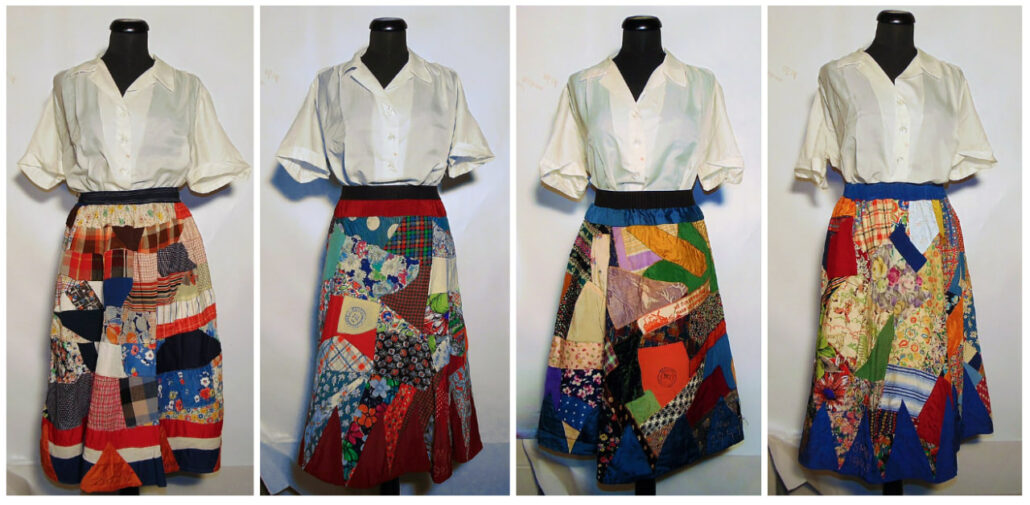
Mansoureh Shojaee, Women’s Movement Museum Iran
It was on November 2022, when curator Fashion and Popular Culture Roberto Luis Martins Called me at the end of our exhibition “From Evin With love” at Institute of Social Studies in The Hague (ISS). His suggestion was about contributing with an exhibition that would open in February 2023; at the Amsterdam Museum: “Continue This Thread”…Together with the fashion designers Karim Adduchi and Tess van Zalinge, he was curating this exhibition!
He explained that it will contain handicrafted objects, showing the resistance of Dutch feminists during the second world war. He added that having an example of knitting object of IRWMM, in particular an object made by Nasrin Sotoudeh would provide additional value to the message of resistance from this artistic display of international resistance in WWII. I was impressed by his plan and offered him the environmentalist doll!! He asked me for an explanation and caption about this doll, and gave me a further professional explanation about the exhibition which would show a collection of patchwork skirts made by Tess van Zalinge These are called Liberation Skirts!!
History of the Dutch liberation skirt
Mies Boissevain-van Lennep was arrested in August 1943 and transferred to concentration camp Vught in October of the same year. While in prison, she was sent a shawl made of all kinds of small patches. She recognized bits of cloth taken from the coats, pants and other clothing belonging to friends and acquaintances. Mies told her fellow prisoners the story about every piece of cloth, which caused the other women reminisce. And share similar stories which served to strengthen the solidarity amongst them.
This occurrence is believed to be the reason behind the introduction of the the national celebration skirt after the war.
After the Second World War, Boissevain-van Lennep took the initiative on behalf of the Committee of Public Holidays and Commemorations to make skirts from various patches. Women would most often wear these on special days. This commemoration wasn’t all about the wearer’s personal memories, the skirt also symbolized the reconstruction and renewal of the Netherlands by combining old pieces of fabric into one new whole.Something that, according to Boissevain-van Lennep, women are naturally good at: creating harmony.[1]
These skirts symbolized the reconstruction of the Netherlands and overcoming personal experiences from the war.
They were first conceived by the resistance fighter Mies Boissevain-van Lennep who called on women throughout the Netherlands to make a Liberation Skirt: a patchwork garment assembled from old clothes and embroidered with significant dates and meanings.

Renetta Grabandt sewed one skirt presented in the exhibition and took part in a large parade of women with their skirts in 1948, marking the 50th anniversary of Queen Wilhelmina’s reign. To enhance the occasion’s significance, a song was also composed and sung in honor of the national skirt
“Unity in the abundance of lines and colors,
With your skirt a bond of solidarity is formed,
Across the whole of historical events,
Adorn the design with your heart and your hand.
Imprint upon your skirt the mark of your days,
Line that which was and is along your pennant.
Present and Past, gladly worn,
Decorate your frock, your family, your being.”
From Smuggling shawl into a prison cell to sending shawl out from a prison cell
The panel took place on the new location of the Amsterdam Museum at Amstel 51. In the Netherlands, May 5th is the day that the people nationally remember its liberation since the Second World War. Because the Liberation Skirt is placed numerous of times in this exhibition, they wanted to use this as a point of departure to talk about what it means to have ‘freedom’ as well as to reflect on that it’s still not a norm for everyone. Considering the work that I do for the IRWMM, the team asked me to join the conversation to also reflect on the current Iranian situation. The conversation was moderated by style anthropologist Carmen Hogg.
She asked me about the story behind of the doll, here is my narration:
It was in 2018, when the Revolutionary Guard corp of Republic Islamic attacked the Environmentalist activists in Iran. They arrested prominent groups defending Iran Ecology these included such things Iranian garden, diverse vegetation of Iran’s ecosystem, Wildlife and nature and natural resources principally by combating air pollution and the use of chemicals and fossil fuels, they were arrested and transferred to Evin Prison.
One of the activists, a kind of leader of the group Dr. Kavoos Emami was announced to have commit suicide,of course it was a fake announcement, every body knows that he was killed.
It was at this time Nasrin Sotoudeh was in Evin Prison because she had defended the girls of Revolution street who had protested the forced Hijab. Nasrin made the doll in memory of Dr. Kavoos Seyed Emami in an act of symbolic mourning and sympathy with the women environmentalist activists who were prisoners in the public women section where Nasrin was also incarcerated.
Carmen asked me further how I got the doll from prison cell, I explained this to her while I was comparing the two collection which based on two shawls From Smuggling scarf into a prison cell on 1943 to sending scarf out from a prison cell on 2023.